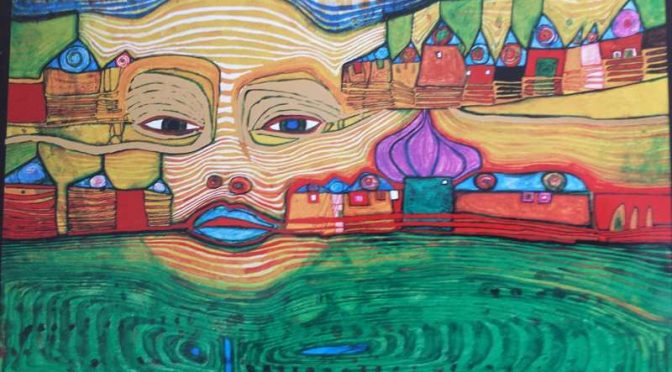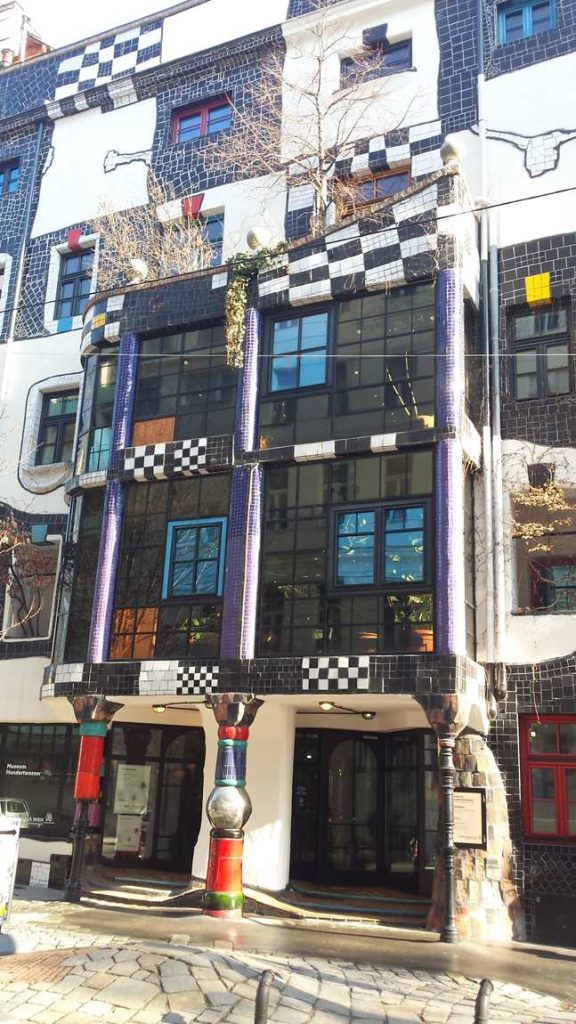
Tuesday – I’ve got my sights set on Museum Hundertwasser. It’s a bit out of the way – not near a Ubann station, so there’s a bit of walking ahead. I take a seat on the train next to an abandoned newspaper. The youngish woman opposite is taking photographs of articles. She says it’s easier to read them on her phone by enlarging. We get talking – it’s easier just to say I live in London. She says she loves London and that her mother took her there. ‘London people are so friendly,’ she says, not like here. I’m surprised by this and guess that this might have been around 2012, when London suddenly became uncharacteristically friendly. I learn that her mother is dead and get a sort of life story. When she finds out that I’m heading for the Hundertwasser, she insists that I go with her as her dental appointment is near there. We catch a tram and both get out at the same stop. ‘It’s not far, you just turn left then right.’ She’s a bit late for the dentist and disappears. There are signs, but I want to go to the museum first and have to resort to my sat nav. The building is magical, but no photography is allowed. The terracotta tiled flooring undulates unevenly with a claim that the earth is like this. I’m not so sure as, being older, I’m finding keeping my balance a slight challenge. One of the first things I notice is that Hundertwasser mentions being buried in Ao Tea Roa. I’ve never seen my native land spelt in this way before and immediately want to know more. I scan his time line – he was Jewish and changed his name at some point, but there’s no explanation of how he survived the war as a child in Vienna. He went to art school, but didn’t stay. There’s a man dressed entirely in black wearing sunglasses. He has walking poles and walks around the exhibit repeatedly like an automaton. Strange – I wonder if he is part of the show. The walking poles obviously help his balance on the uneven floor.
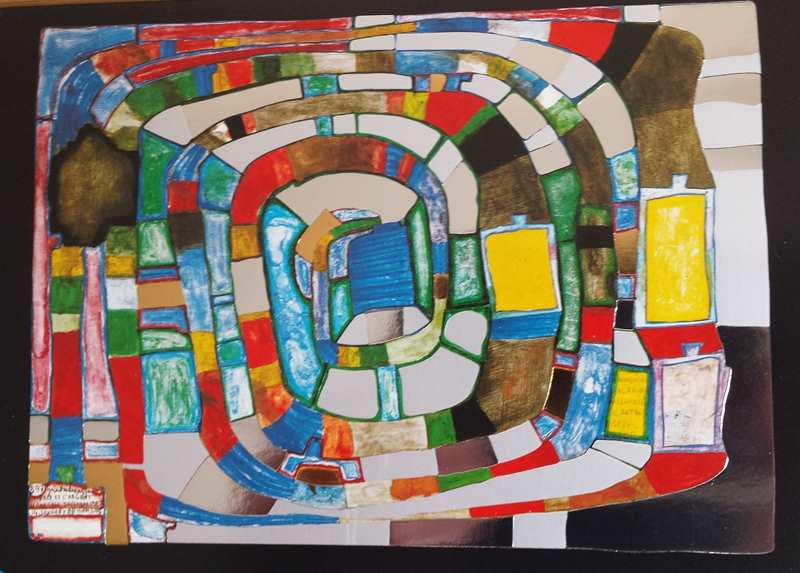
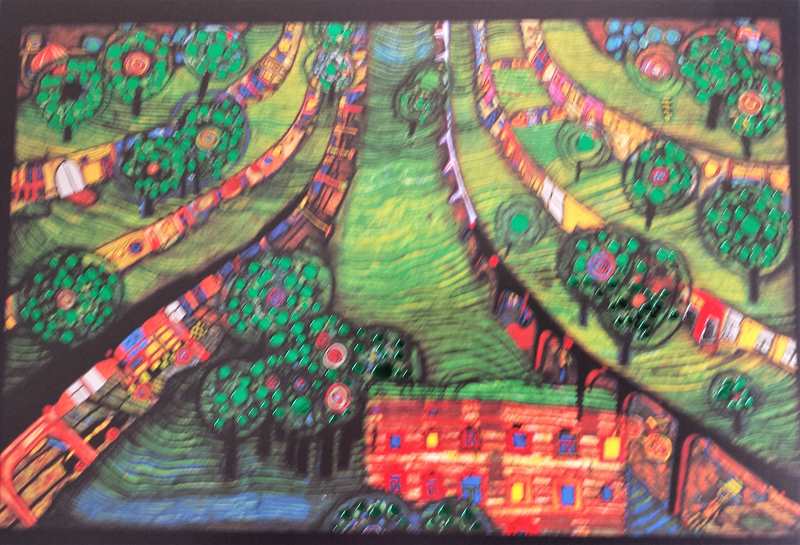
The art is amazing and colourful. Often representational, including spirals of different colours. He seems to have travelled all over the world but after his first visit to New Zealand/Aotearoa he returned there repeatedly. He became ill and was cared for in a rural hospital and bought a property there. In the end he was buried in Aotearoa, on his property, with a tree planted over him to make use of his molecules in this new life. There’s a picture of the young tree doing well – I’m slightly disappointed that it’s not a native of Aotearoa, but a Tulip Tree or Liriodendron. Mum had one on our lawn when we were young it took twenty years to produce any flowers. Friedensreich Hundertwasser, I’m amazed to learn, designed flags. His Green Koru for New Zealand
is simple and effective. Ex-prime minister John Keys could have saved a lot of time and money by just adopting it.
For Australia he designed a red half circle supported below by the blue ocean and one star.
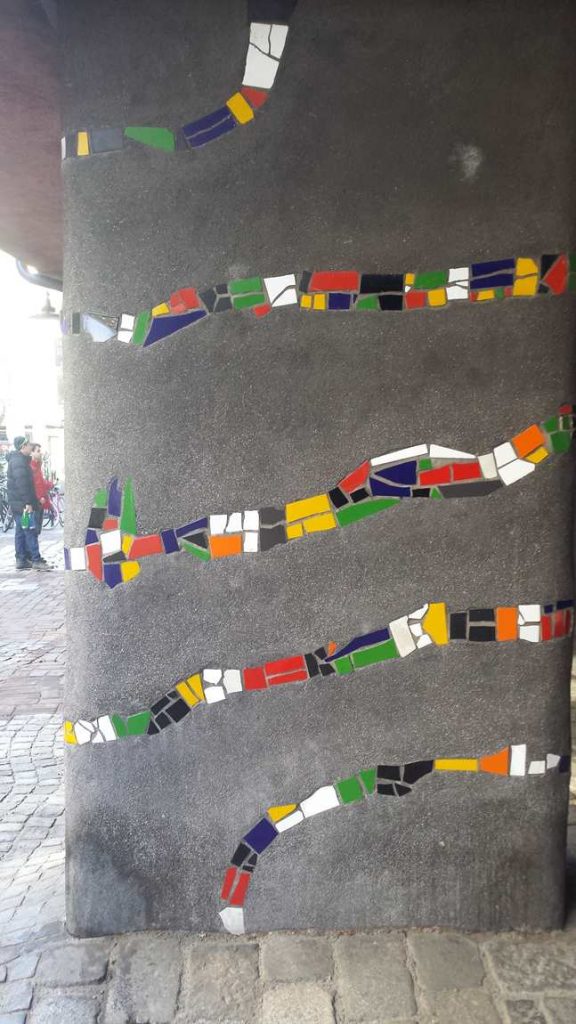
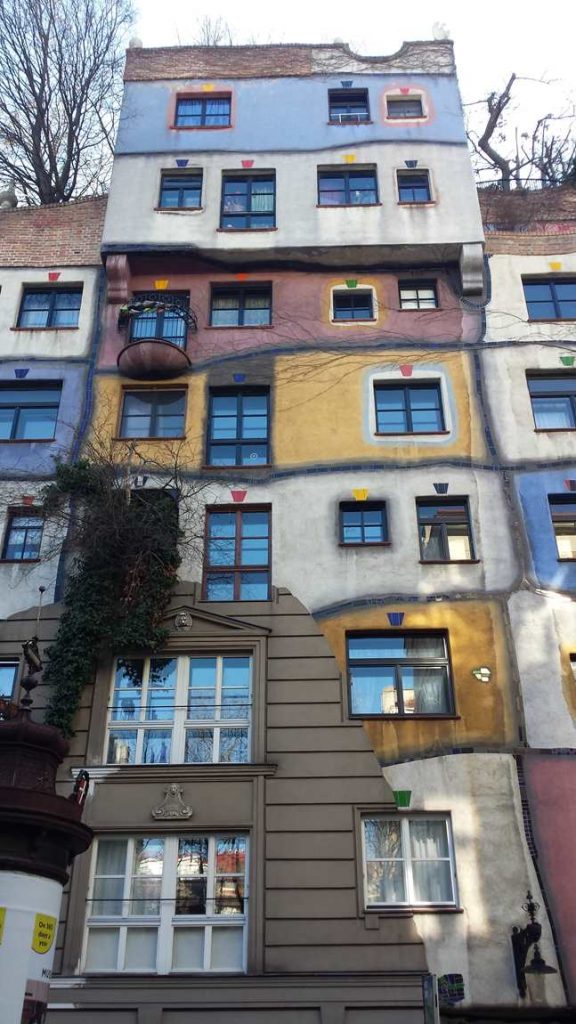
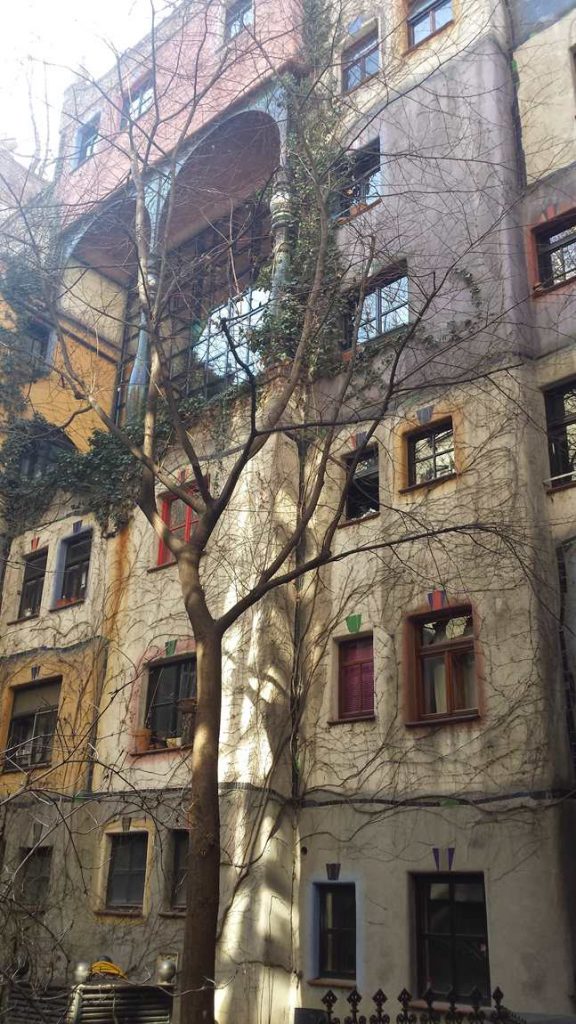
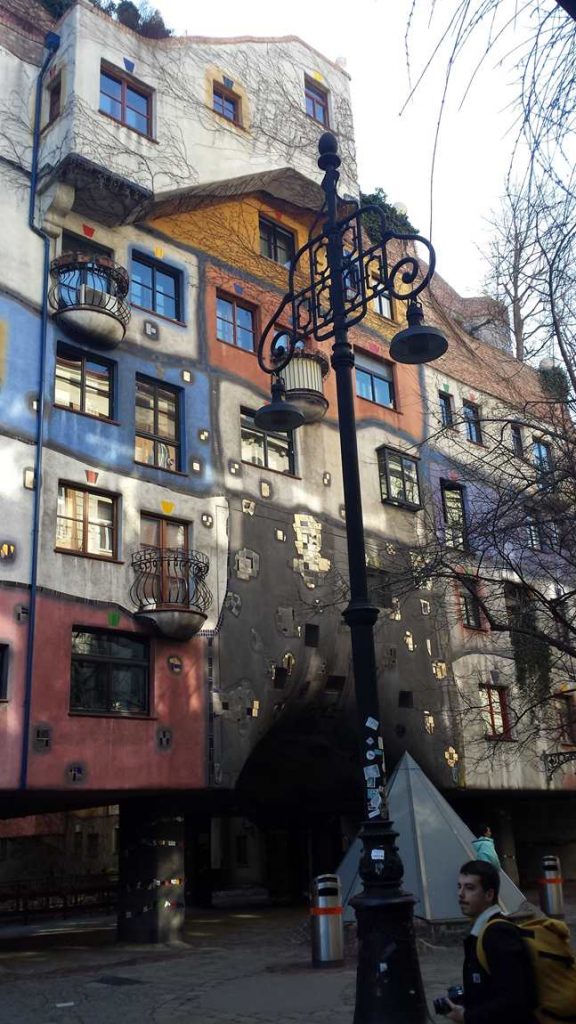
I’m interested to find that his flag for Israel included a blue star of David with a green crescent moon. He was also great at print making and graphics – an inspirational visit and I’m keen to get on down the road to see the Hundertwasser House – a block of apartments done in his inimitable style, not unlike Gaudi and to be found in various other world cities. It’s gloriously sunny but not over crowded with tourists.
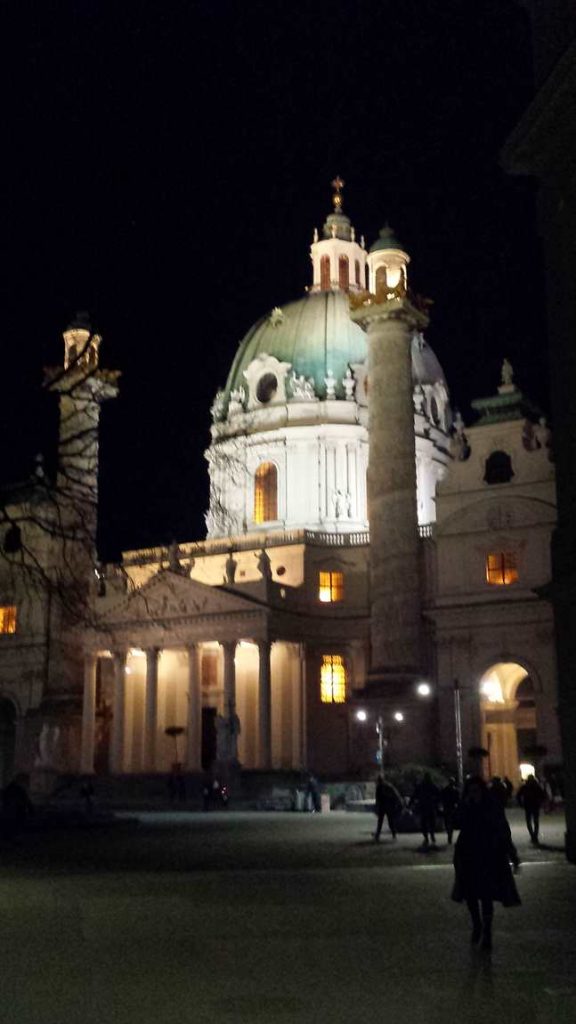
I’m slightly disorientated by now and take a while consulting my google maps to decide which way to walk. I take a risk and find a tram gong in the right direction. It passes an underground station, so I get off and take the Ubann to re-visit Karls Kirche, which we’d passed on our walking architectural tour. The church was completed in 1737 and combines a variety of styles and epochs in world history.
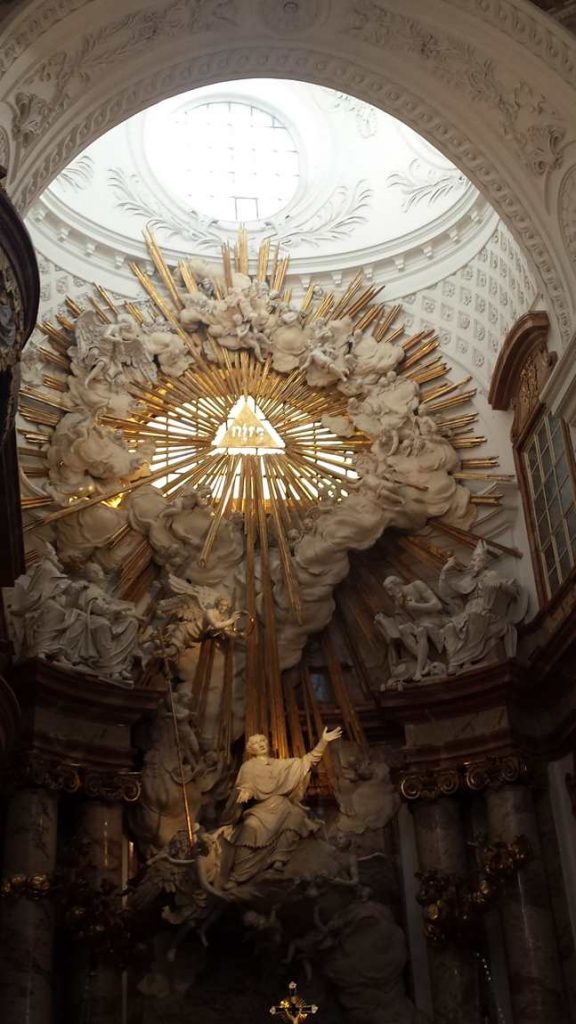
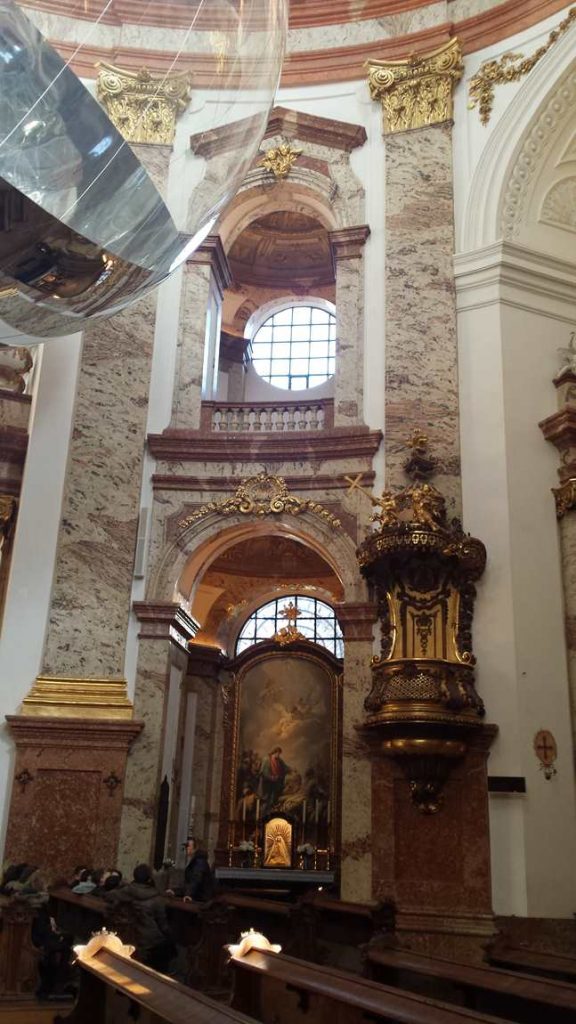
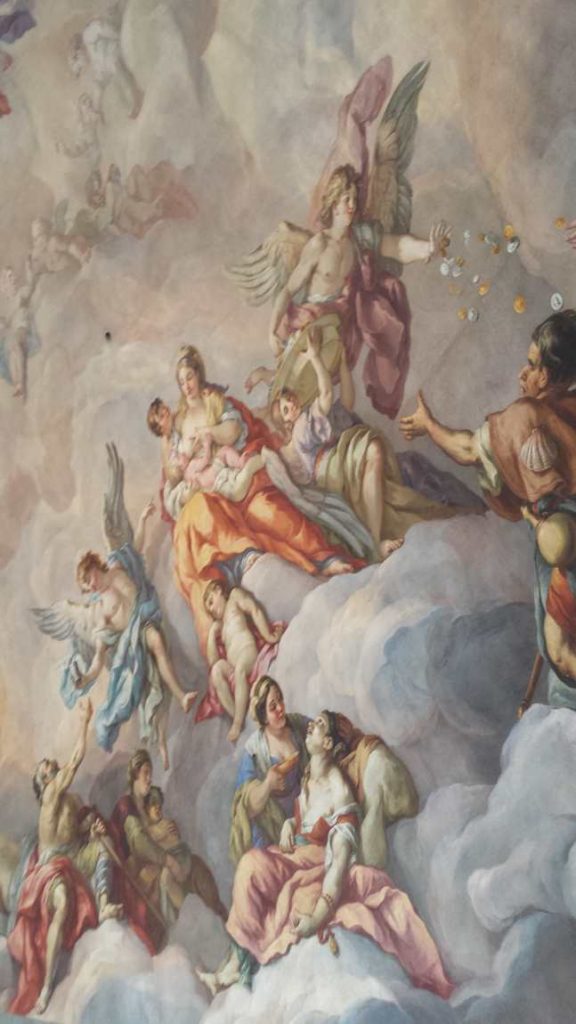
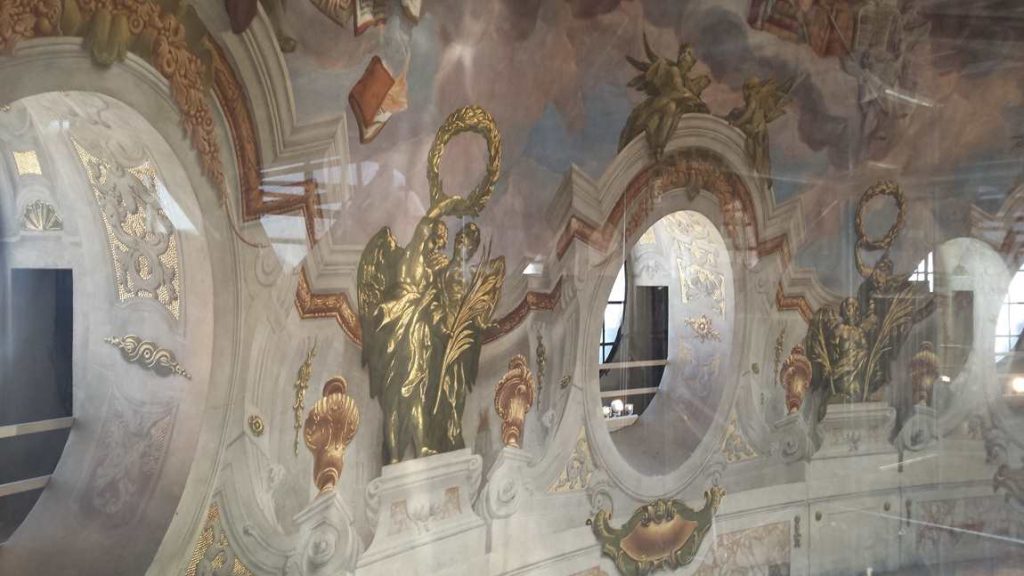
There are stairs up to see the ‘treasure’ – not really worth the climb and my legs certainly didn’t need the exercise. Inside the church are several large inflated silver and transparent globes which reflect the walls and murals. It seems vast and very high. This is due to various tricks of perspective which make it appear so. Marble columns and panels are tapered towards the ceiling. There’s a huge clump of scaffolding in one corner which houses a lift and I take this up to a viewing platform to see the ceiling art-work. Looking down is scary – vertiginous. Luckily there are Perspex panels – blacked out lower down to give a better sense of safety. It’s worth the journey to see the murals and the view down to the street below.
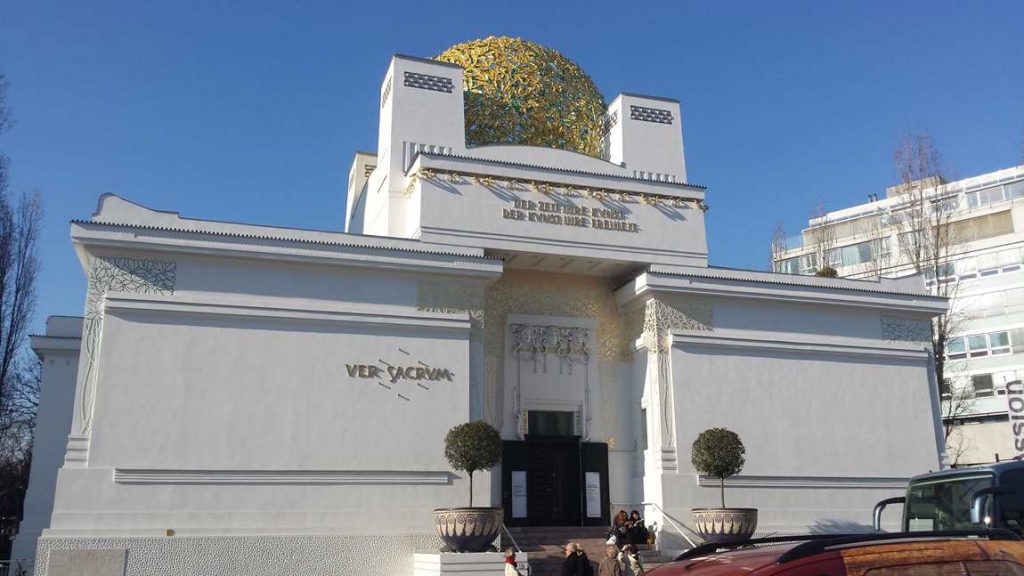
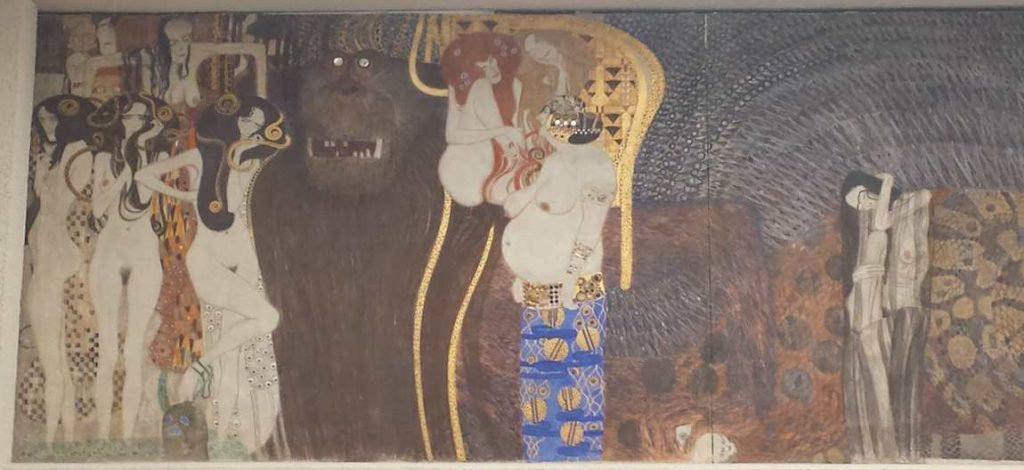
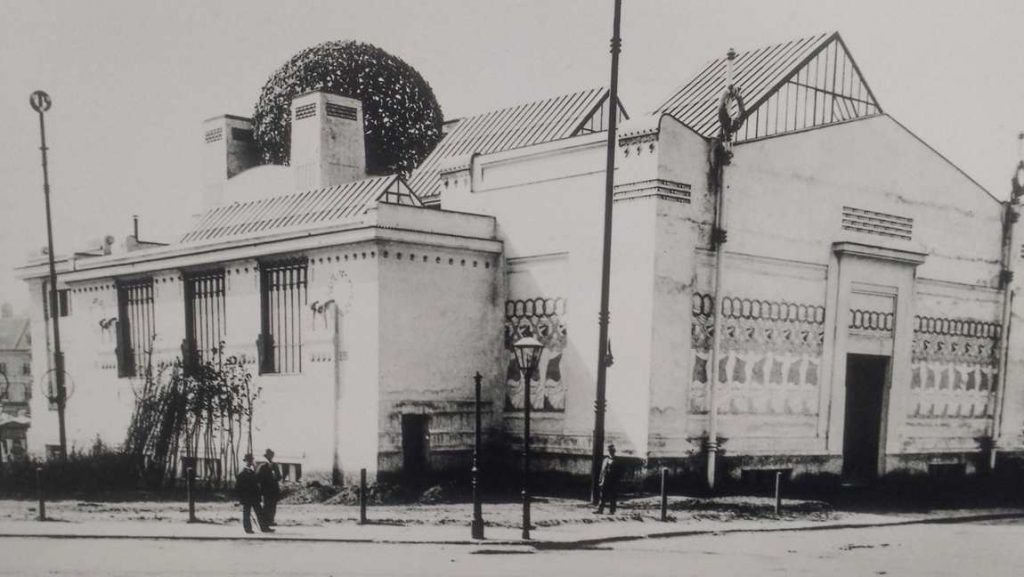
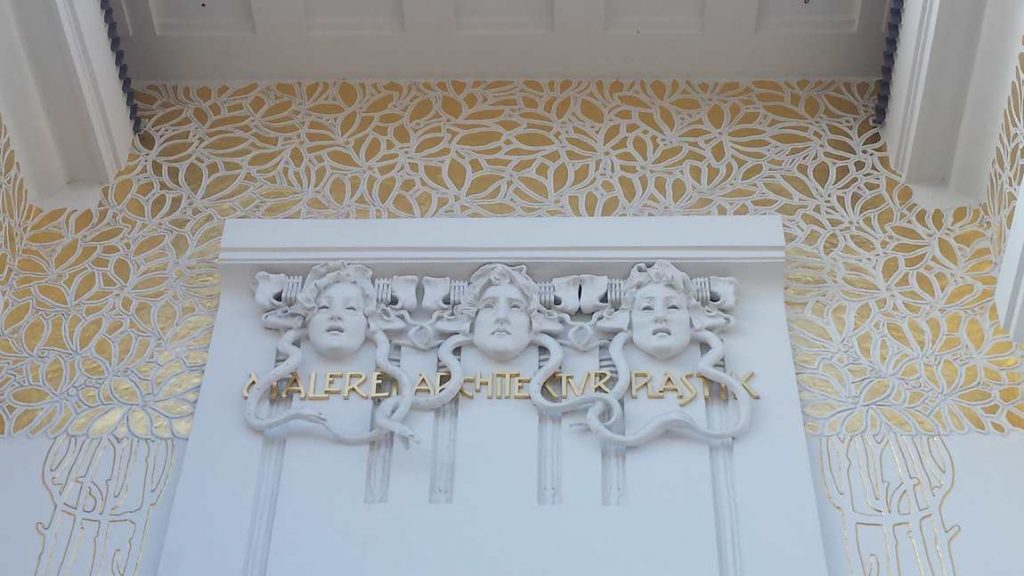
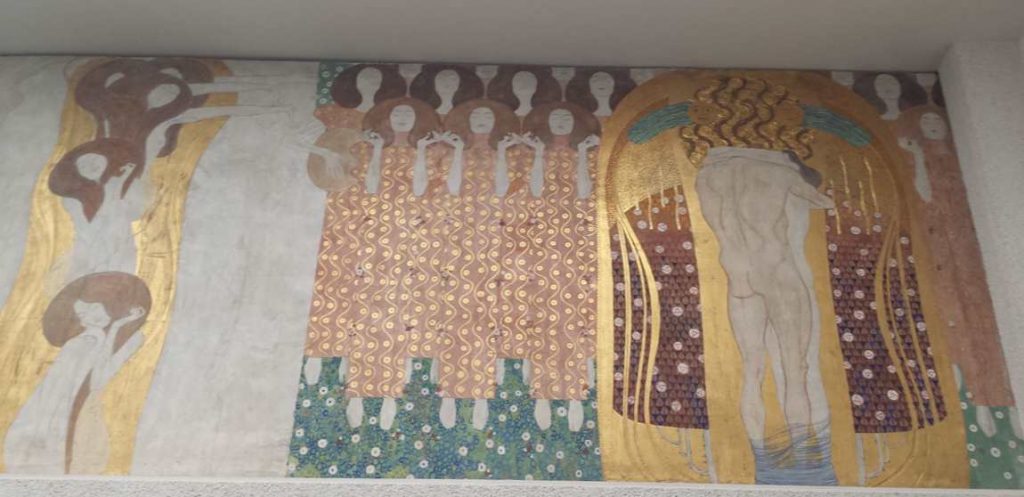
From here, it’s only a short walk to re-visit Secession, also seen in the near-dark on our walking tour. It has been stunningly restored and it’s now possible to go in. I’m down to my last few euros and so ask to pay by card. Many places in Austria still have minimum amounts, like 15 Euros. The nice man on the desk lets me in for the group tour price leaving me 30 cents. The main exhibition space is displaying video art/installation. Very engaging and suitably in the spirit of secession.
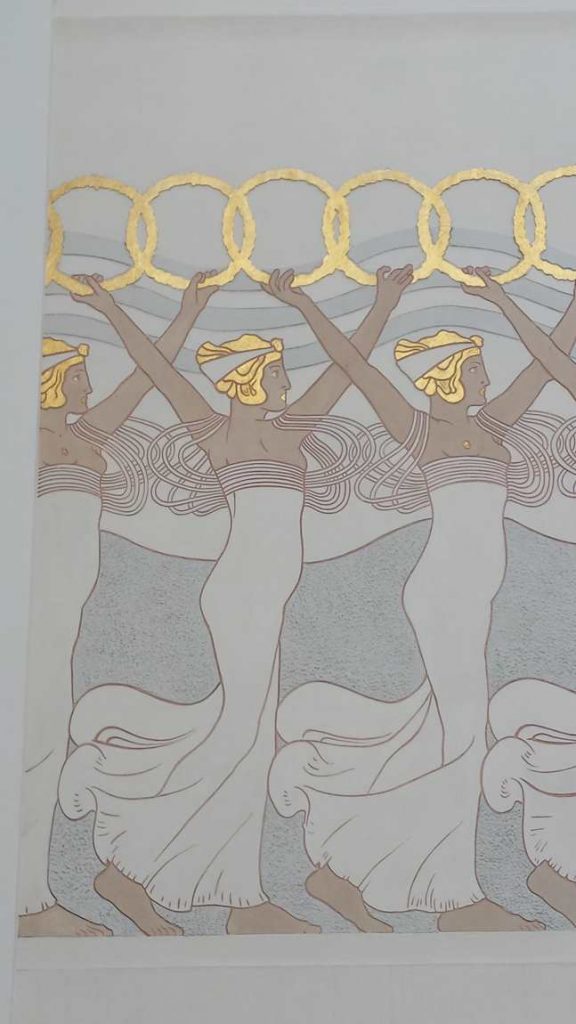
Down a level there’s similar work – a young man walking and falling over, getting up and walking – narrowly avoiding being run over by cars, falling down again and so on. There’s someone carrying a white screen which takes up most of the video screen. You just get a hint of the landscape. Down yet another level is the Kimpt frieze. Worth the wait for that. There’s a picture of the original building, the back of which was severely bombed at the end of the war. You can see the frieze of women holding up rings and now a small part of the frieze has been re-created. There’s also a photo of the ribbon of approval the building had from the nazis during their annexation of Austria.
Time to go back to my apartment for a rest and re-group. There’s another local pub style restaurant listed in the Gay guide. Sixta offers traditional Austrian fare and I have soup followed by the most delicious goulash. The clientele is not at all gay – mostly locals but I think the waiter might be.
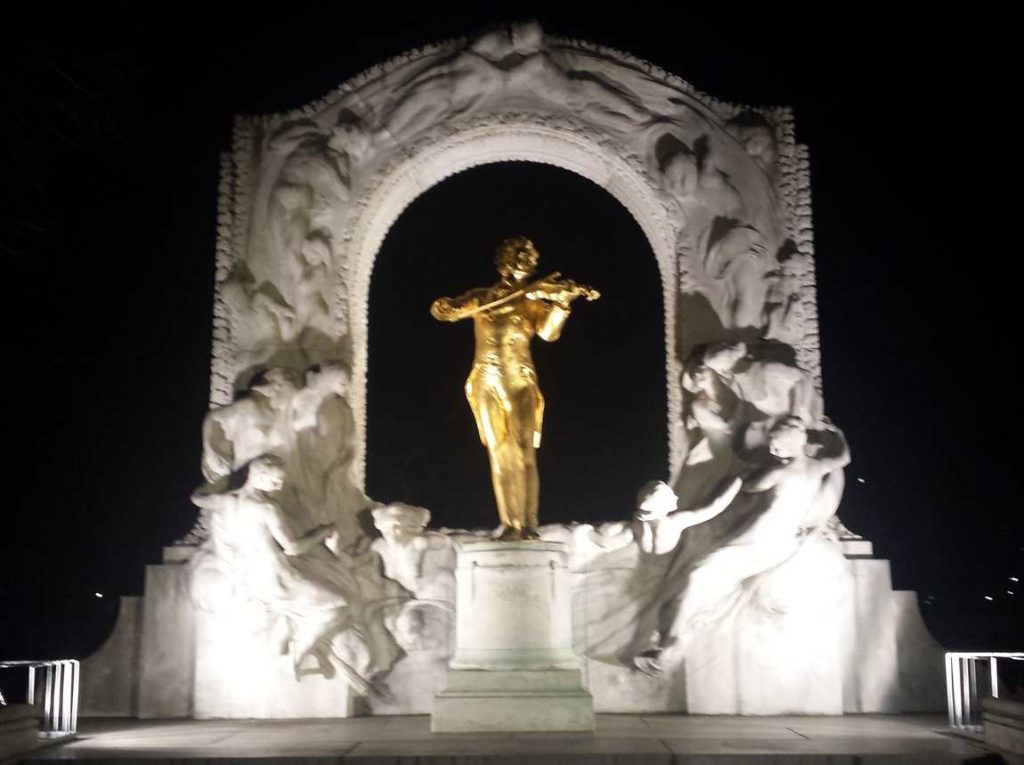
I’ve booked an evening of Mozart and Johann Strauss music at the Kursalon, a concert venue where Strauss himself performed. I’m early and briefly look in the park to admire a golden statue of Johann. The venue is grand and looks like a wedding cake, all lit up with fairy lights. Crowds of coaches are pulling up and loads of tourists are flooding in. I notice that its €1 for the coat check. I’m all out of cash and so decide to take my coat in with me. That’s not allowed, I have to check it in.
‘But I don’t have a euro.’ I tell the man. ‘Can you do VISA?’ He suggests I go to a nearby ATM. ‘I’m not going to go to an ATM and withdraw one euro. I only do cards.
‘What, you wander around with no cash?’
‘Yes.’ I tell him. ‘Here, I have forty cents.’ He tells the coat check man not to charge me for checking in my coat. Result.
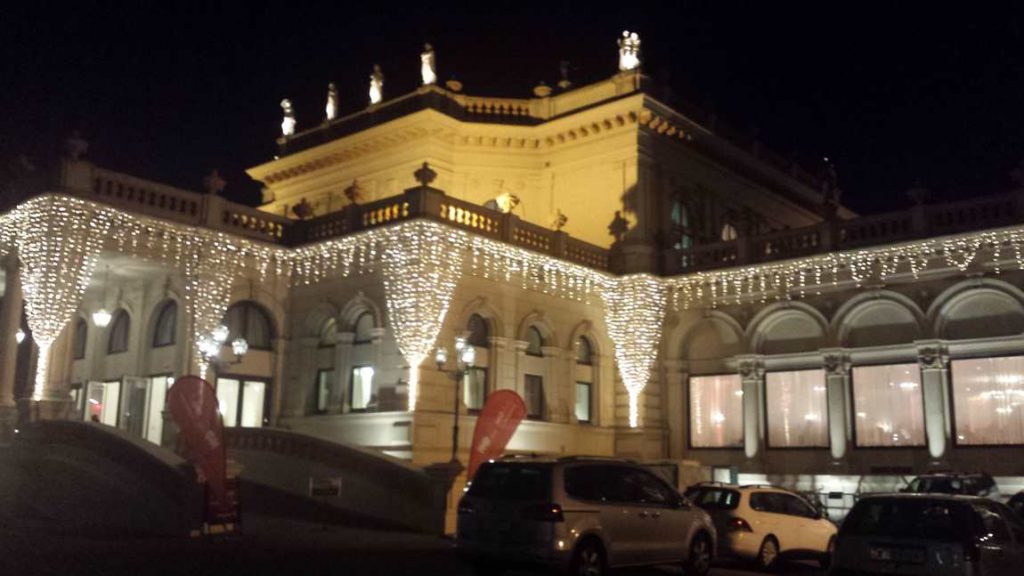
We are in a level concert hall with a dais at one end. Chandeliers drip liberally from the ceiling. I’ve gone for the cheaper seats at the back as I know that the sound should be ok. An usherette parades around the auditorium holding up a card representing no photography. She has a stern look on her face and makes sure that everyone in the hall has seen her. Finally, the musicians arrive; the leader of this nonet is an elderly violinist who seems to have a sense of humour. They start off with a polka – rousing stuff. Then we seem to be working our way through the well-known Johann Strauss waltzes and polkas. The trouble with waltzes is that they are for dancing. The first few staves are fine, then it becomes repetitive. It seems that there is only so much you can do to develop a Waltz. The solution is to bring in a couple of dancers. She’s very balletic with legs and arms going up and down, while he is no Nureyev, but good at leading a Viennese waltz. They can only dance in one plane – across the front of the dais and back – so the choreography is limited and can’t even compare with ‘Strictly’. A soprano comes on and sings an aria from a Strauss Opera – it’s a waltz. Things might look up as a baritone comes on to sing some Mozart. It’s Non Piu Andrai – an aria I used to sometimes sing at auditions. His acting isn’t very good and he doesn’t quite have the right power. We are back to the Strauss waltzes and the dancers. Suddenly there’s Eine Kleine Nachtmusik by Mozart – this also has memories – strange – of performing this piece as part of a clarinet quartet at a secondary school chamber music competition. At last there’s the duet from Don Giovani – La ci darem la mano. The two singers return and they are very good. The baritone has found his place as the seducer. It’s an ok experience, but not stunning, although the Blue Danube is well done. The encore is another strange memory from way-back. Brahms’ Hungarian Dance Number 5. We used to play this in the town orchestra and I could never manage the clarinet part. I remember the gusto with which our elderly rural violinists attacked this piece. Sadly, the opera was all sold out so this is second choice.
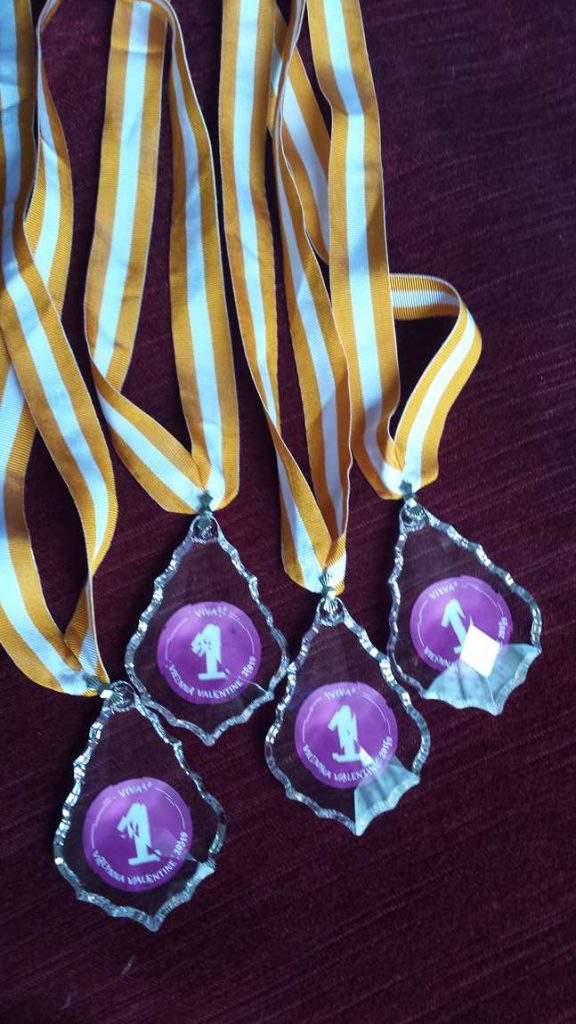
The final day is travelling home. I’m ready to do all the airport security in reverse and you can even buy a bottle of drink to take through wrapped up in a sealed transparent plastic bag. Something in my bag has alerted the machine and I’m asked to open up.
‘Have you got any crystals?’ she asks.
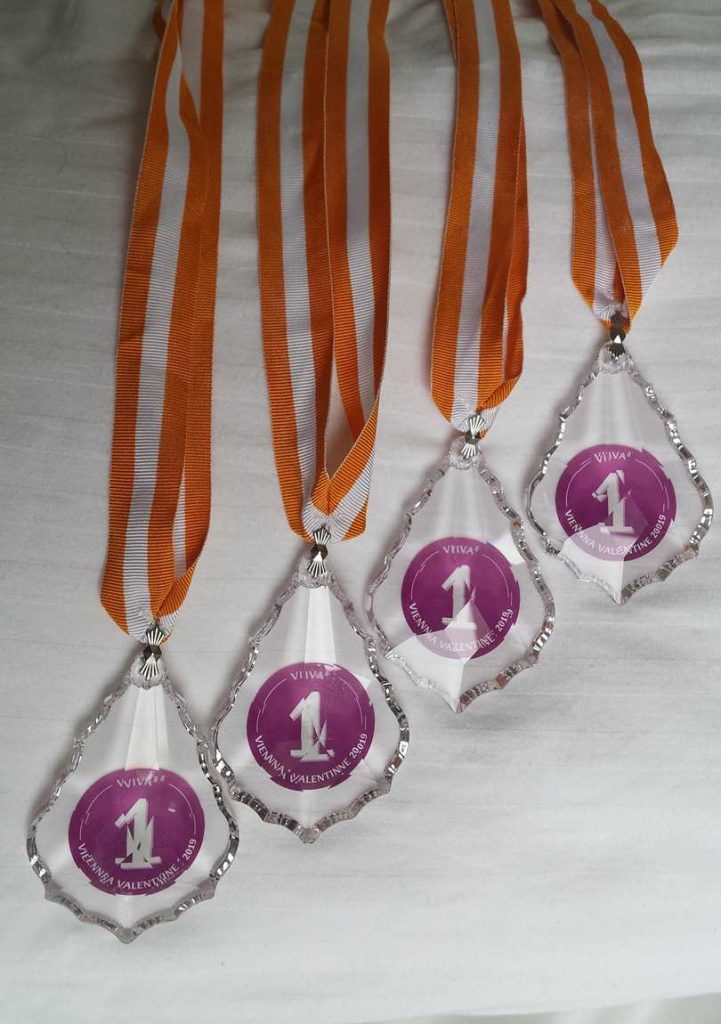
‘Yes,’ I reply. I wondered if my swimming medals would cause a problem. Of course, they’re in my swimming bag right at the bottom of my carry-on. I’m in plenty of time, so there is no need to panic and I refuse to be rushed by the woman.
Later, back in London at swim training I ask my team mates if the same thing happened to them. Yes, it did. It’s hard going, the first swim in four days. I did six races, five museums and two palaces. My legs are wrecked.
